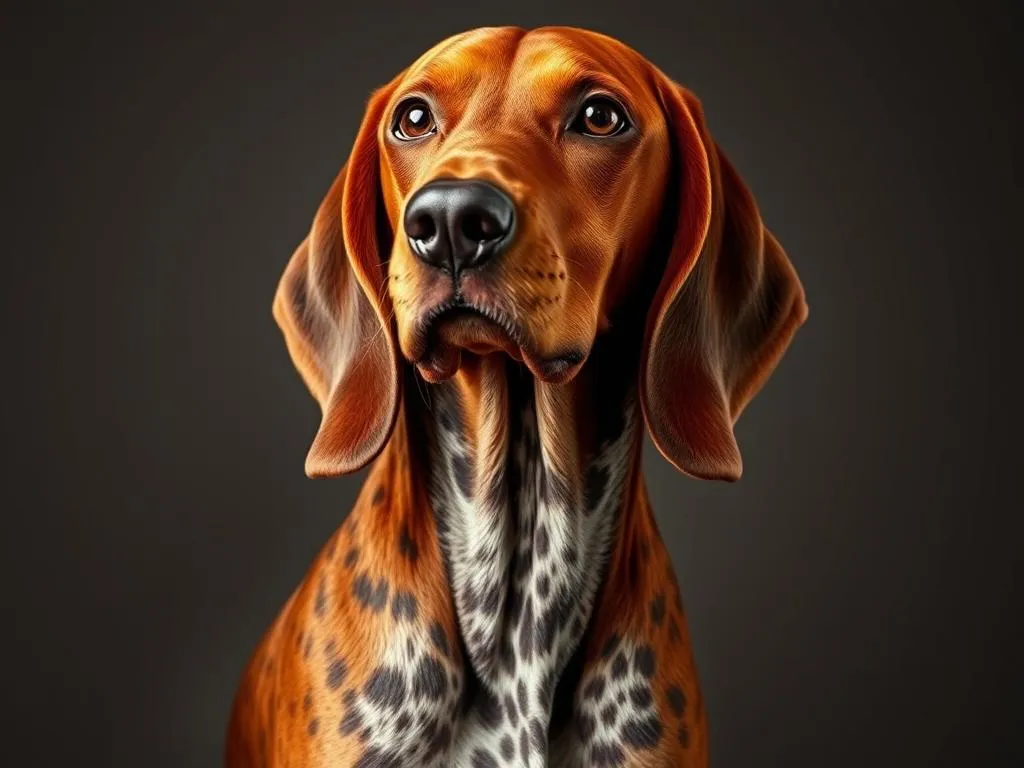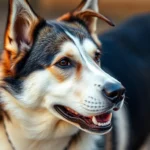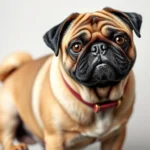
Introduction
The world of dog breeds is incredibly diverse, showcasing a variety of shapes, sizes, and temperaments. Understanding different breeds is essential for potential pet owners, helping them to choose a dog that fits their lifestyle and family dynamics. One breed that stands out for its charm and capabilities is the Redbone Coonhound. This article delves into the fascinating history, characteristics, health considerations, and other essential aspects of the Redbone Coonhound breed.
History and Origin of the Redbone Coonhound
Early Beginnings
The Redbone Coonhound traces its ancestry to various hunting dogs brought to America by early settlers. These dogs were bred for their exceptional tracking abilities, particularly in hunting raccoons, which is where the breed gets its name. The origins of the Redbone Coonhound are believed to intertwine with several breeds, including the Bloodhound and the English Foxhound, both known for their keen sense of smell and stamina.
Development in the United States
As the breed adapted to the American landscape, it became renowned for its agility and hunting prowess. The Redbone Coonhound was particularly valued for its ability to track and tree raccoons, making it a favorite among hunters. Over the years, the breed gained recognition from various kennel clubs, including the American Kennel Club (AKC), which officially recognized the Redbone Coonhound in 2009. Today, the breed is celebrated not only as a working dog but also as a beloved family companion.
Physical Characteristics
Size and Weight
The Redbone Coonhound is a medium to large-sized dog. Males typically stand between 22 to 27 inches at the shoulder and weigh between 45 to 70 pounds. Females are slightly smaller, standing 21 to 26 inches tall and weighing between 40 to 65 pounds. Their athletic build makes them well-suited for various physical activities.
Coat and Color
The breed is known for its striking coat, which is short, smooth, and dense. The Redbone Coonhound is primarily recognized for its rich red coloration, which can range from a deep mahogany to a lighter, golden-red hue. Some dogs may have white markings, particularly on the chest and feet, but the predominant color remains red.
Distinctive Features
One of the most recognizable traits of the Redbone Coonhound is its long, droopy ears, which contribute to its keen sense of smell. Their eyes are expressive and often amber or brown in color, giving them an affectionate appearance. The breed’s long tail is typically held high and is often described as having a slight curve, making it a distinctive feature of the Redbone Coonhound.
Temperament and Behavior
General Temperament
The Redbone Coonhound is known for its friendly and affectionate nature. They are typically loyal and devoted to their families, making them great companions. This breed is often described as energetic, playful, and eager to please, which makes them well-suited for active households.
Behavioral Traits
Intelligence is a hallmark of the Redbone Coonhound, making them relatively easy to train. However, they can be somewhat independent-minded, which means that consistent training methods are essential. They often thrive on positive reinforcement techniques, responding well to praise and treats. The Redbone Coonhound is also known for being good with children and can interact well with other pets if properly socialized from a young age.
Social Needs
Being a social breed, the Redbone Coonhound requires companionship and interaction. They do not like being left alone for long periods, as they can become bored and develop destructive behaviors. Regular socialization with other dogs and people is crucial for their emotional well-being.
Health Considerations
Common Health Issues
Like many breeds, the Redbone Coonhound is predisposed to certain health issues. Some common concerns include hip dysplasia, ear infections, and certain eye conditions. Regular veterinary check-ups can help identify and manage these issues early on.
Lifespan
The average lifespan of a Redbone Coonhound ranges from 10 to 12 years. Factors that can influence their longevity include genetics, diet, exercise, and overall health care. Providing a healthy lifestyle can help maximize their lifespan.
Preventive Care
Routine veterinary visits, vaccinations, and preventive care are essential for keeping the Redbone Coonhound healthy. Regular check-ups can catch potential health issues before they become serious problems, ensuring your dog lives a happy and healthy life.
Training and Exercise Needs
Basic Training Requirements
Training a Redbone Coonhound requires patience and consistency. Basic obedience training is vital, as it helps establish boundaries and improves communication. Using positive reinforcement techniques, such as treats and praise, can enhance their learning experience and strengthen the bond between owner and dog.
Exercise Requirements
As an energetic breed, the Redbone Coonhound requires ample exercise to stay healthy and happy. Daily activities should include at least 60 to 90 minutes of physical exercise, such as walking, running, or playing fetch. They enjoy activities that challenge their hunting instincts, like tracking games or agility courses.
Activities Suitable for the Breed
The Redbone Coonhound thrives in environments where they can engage in various activities. They excel in outdoor adventures like hiking, running, and even hunting. Their natural instincts make them great companions for those who enjoy an active lifestyle.
Grooming and Maintenance
Grooming Needs
Grooming a Redbone Coonhound is relatively straightforward due to their short coat. They require brushing once a week to remove loose hair and keep their coat healthy. Bathing should be done as needed, typically every few months or when they get particularly dirty. Special attention should be given to their ears, as they are prone to infections.
Dietary Considerations
A balanced diet is crucial for the health of a Redbone Coonhound. High-quality kibble that meets their nutritional needs is recommended. The quantity of food will depend on their age, size, and activity level. It’s essential to avoid overfeeding, as this breed can be prone to obesity. Some owners opt for raw diets, but it’s best to consult with a veterinarian before making dietary changes.
Living with a Redbone Coonhound
Ideal Living Environment
The Redbone Coonhound adapts well to various living situations, but they thrive best in homes with ample space to roam and play. While they can live in apartments, access to outdoor areas is essential for exercise. A fenced yard is ideal, as it allows them to run freely and explore.
Compatibility with Owners
This breed is suitable for families, singles, and seniors, as long as they can meet the dog’s social and exercise needs. They are known to bond closely with their families, making them loyal companions. However, potential owners should be prepared for the breed’s energetic nature and need for companionship.
Potential Challenges
While the Redbone Coonhound is generally well-behaved, they can exhibit certain behavioral challenges, such as stubbornness or excessive barking. Early training and socialization can help mitigate these issues. Owners should also be prepared for their strong prey drive, which may lead them to chase smaller animals if not properly managed.
Conclusion
In summary, the Redbone Coonhound is a remarkable breed characterized by its friendly demeanor, impressive hunting skills, and striking appearance. Their loyalty and affection make them excellent companions for active families and individuals alike. By understanding their unique traits and requirements, prospective owners can determine if the Redbone Coonhound is the right fit for their lifestyle.
Frequently Asked Questions (FAQs)
What is the typical exercise routine for a Redbone Coonhound?
A Redbone Coonhound typically requires 60 to 90 minutes of exercise daily. Activities like walking, running, or engaging in tracking games are ideal for keeping them physically and mentally stimulated.
Are Redbone Coonhounds good with children?
Yes, Redbone Coonhounds are generally good with children. Their friendly nature and playful demeanor make them excellent companions for kids, provided they are socialized properly.
How do I train a Redbone Coonhound effectively?
Effective training for a Redbone Coonhound involves using positive reinforcement techniques. Consistency, patience, and early socialization are vital for success.
What are the best activities for a Redbone Coonhound?
Activities that engage their hunting instincts, such as tracking games, hiking, and running, are highly beneficial for a Redbone Coonhound. They thrive in environments that allow them to explore and play.
By keeping these considerations in mind, you can enjoy a fulfilling relationship with your Redbone Coonhound, ensuring they grow up to be a happy and healthy member of your family.









